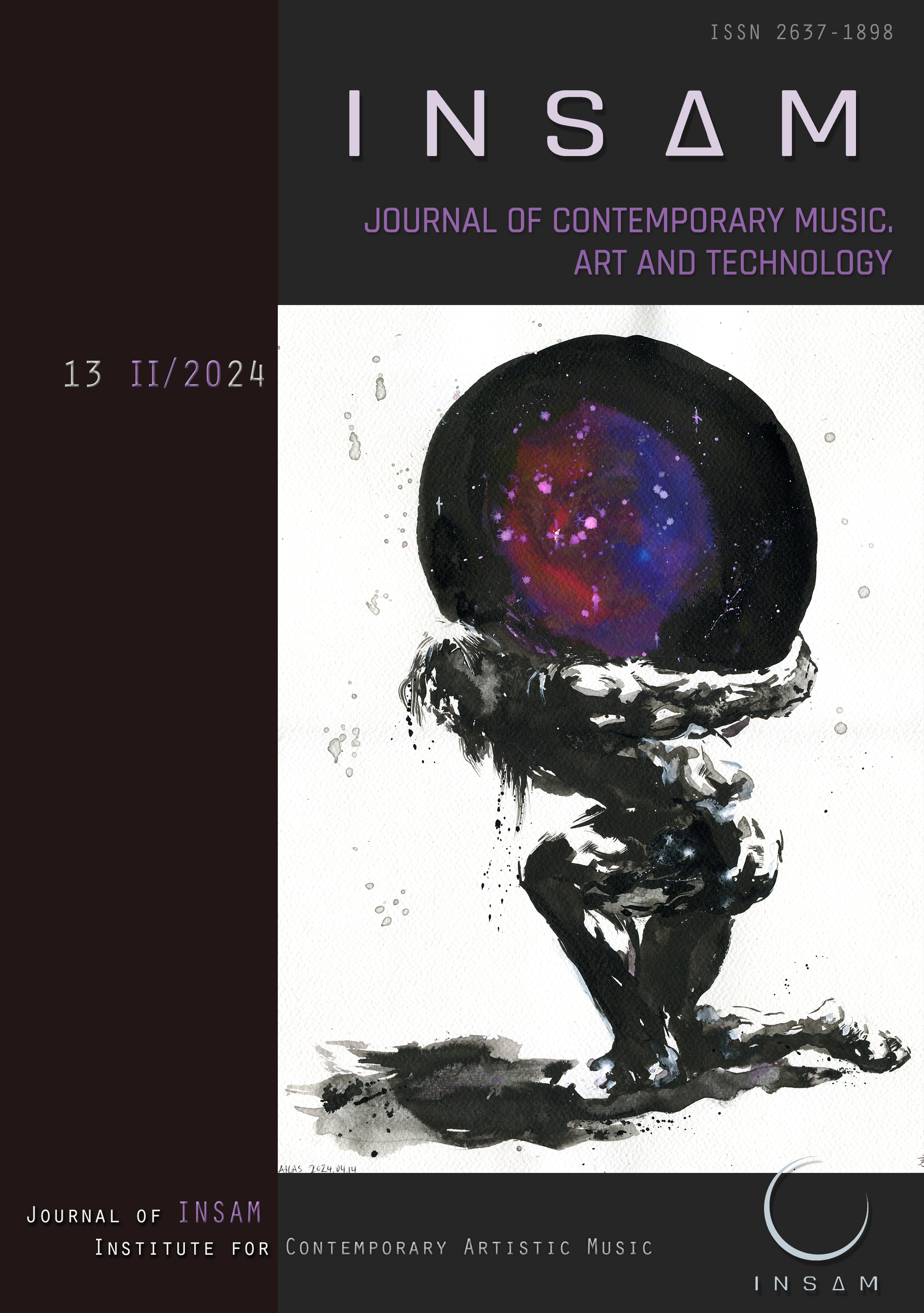Towards Technological Ecologies as Compositional Environments in the Pedagogy of Acoustic Composition
DOI:
https://doi.org/10.51191/issn.2637-1898.2024.7.13.12Keywords:
technology, pedagogy, notation software, affordances, disorientation, score, notation, ecosystem, ecologyAbstract
Over the last few decades, the use of engraving software in acoustic composition pedagogy has become near ubiquitous. Numerous studies, such as those by Chen and O’Neill, Owlabi, and Nielsen, show that the use of both notation software and technology more broadly in composition aids both the creative process and the development of musical skills. However the paradigms of thought offered by traditional engraving software such as Sibelius and Finale arguably discourage approaches to acoustic composition beyond the quantifiable parameters it encodes visually and represents in playback, leading to the decentring of many of the musical features prevalent in contemporary art music.
Using a framework informed by ecosystem-oriented analyses of creativity and Sara Ahmed’s queer phenomenology of disorientation, this paper will interrogate the potential for practical applications of new technology to broaden student composers’ toolkits when used in addition to notation software. As such, it draws from a range of real-world examples in order to offer educators some achievable means by which they can encourage student composers to think beyond notation software, as well a number of suggestions for future research, and furnish them with a basis from which to consider their music in terms that matter most to them.
Downloads
Published
Issue
Section
License
Copyright (c) 2024 INSAM Journal of Contemporary Music, Art and Technology

This work is licensed under a Creative Commons Attribution-NonCommercial-NoDerivatives 4.0 International License.
You are free to:
- Share — copy and redistribute the material in any medium or format
- The licensor cannot revoke these freedoms as long as you follow the license terms.
Under the following terms:
- Attribution — You must give appropriate credit , provide a link to the license, and indicate if changes were made . You may do so in any reasonable manner, but not in any way that suggests the licensor endorses you or your use.
- NonCommercial — You may not use the material for commercial purposes .
- NoDerivatives — If you remix, transform, or build upon the material, you may not distribute the modified material.
- No additional restrictions — You may not apply legal terms or technological measures that legally restrict others from doing anything the license permits.




